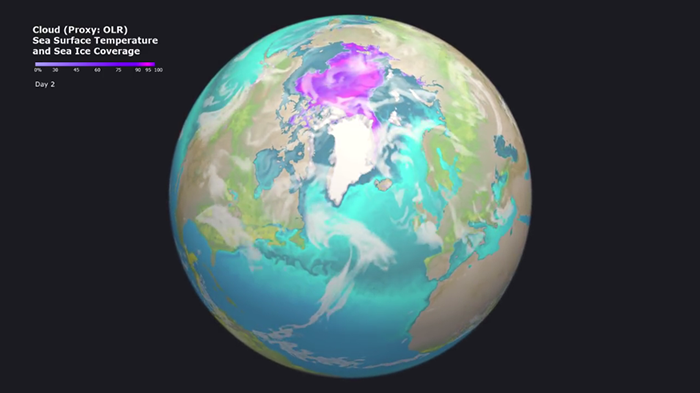The Energy Exascale Earth System Model, or E3SM, is a powerful and comprehensive model development and simulation project that uses the world’s fastest computers so that scientists can better understand how Earth system processes interact today and how they may evolve in the future.
The first phase of the model debuted in 2018, after four years of development by geophysical and computational scientists from various universities and Department of Energy (DOE) laboratories, with Lawrence Livermore as the lead institution. By exploiting advanced software and computing hardware as it becomes available, such as the exascale systems that will be delivered to several DOE facilities in the early 2020s, E3SM aims to accelerate the development and application of Earth system models for scientific and energy applications.
The initial focus for the effort has been on three climate change science drivers: the water cycle, biogeochemistry, and cryosphere systems. To address the water cycle, the project is simulating changes in the hydrological cycle, with a specific focus on precipitation and surface water in topographically complex regions such as the western United States and the headwaters of the Amazon. To address biogeochemistry, researchers are examining how more complete treatments of nutrient cycles affect carbon–climate system feedbacks, with a focus on tropical systems, and investigating the influence of alternative model structures for below-ground reaction networks on global-scale biogeochemistry–climate feedbacks. For the cryosphere, the team is looking at the near-term risks of initiating the dynamic instability and onset of the collapse of the Antarctic Ice Sheet due to rapid melting by warming waters adjacent to the ice sheet grounding lines.
Learn more about E3SM
- Contact: David Bader
- E3SM website
- E3SM video





